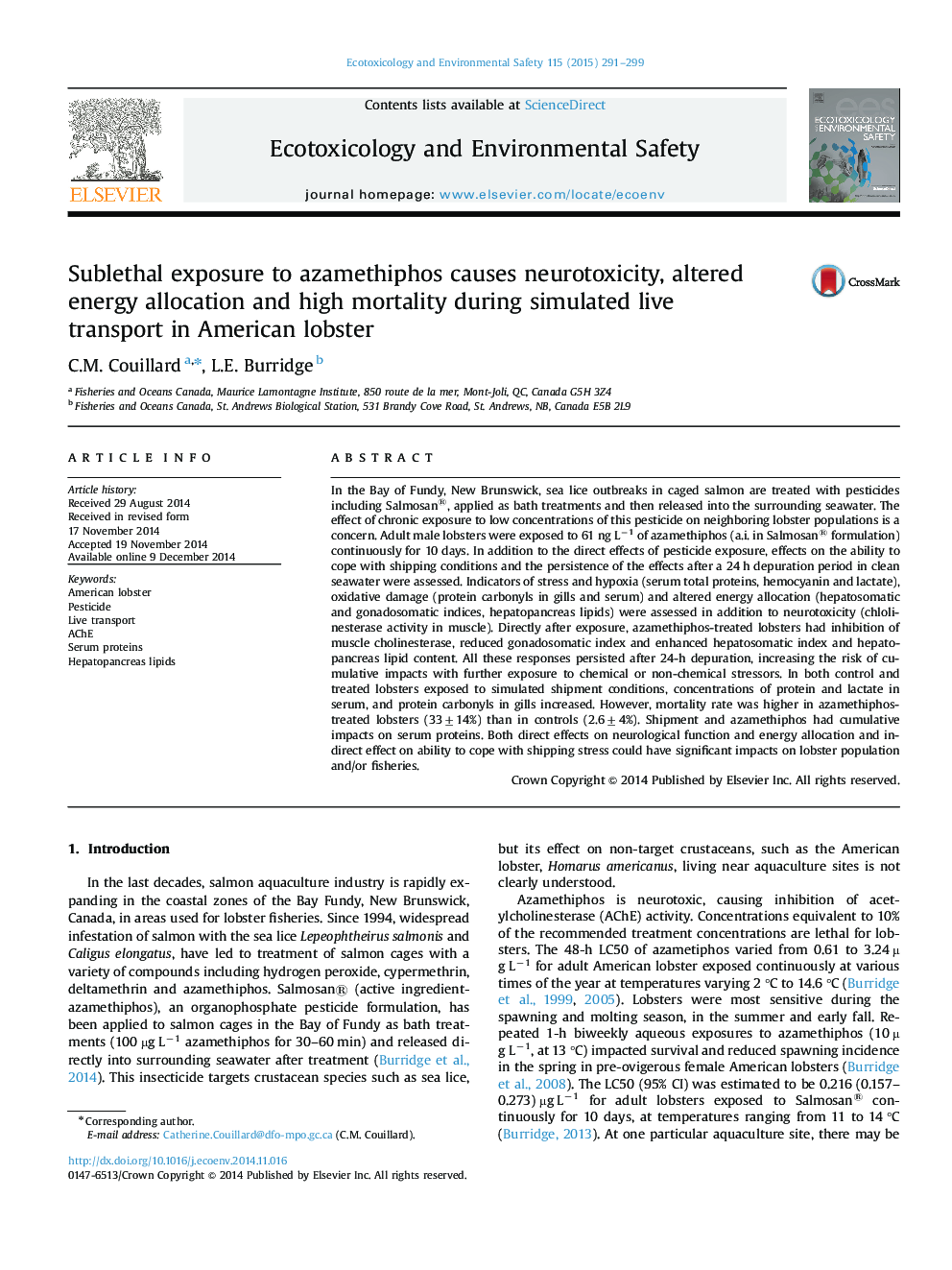| Article ID | Journal | Published Year | Pages | File Type |
|---|---|---|---|---|
| 4419763 | Ecotoxicology and Environmental Safety | 2015 | 9 Pages |
•Sublethal effects of Salmosan were assessed in adult male American lobster.•Salmosan decreased muscle cholinesterase activity and gonadosomatic index.•Treatment increased hepatosomatic index and hepatopancreas lipid content.•These responses persisted after 24-h depuration in clean seawater.•Pre-treatment with Salmosan increased mortality during shipment.
In the Bay of Fundy, New Brunswick, sea lice outbreaks in caged salmon are treated with pesticides including Salmosan®, applied as bath treatments and then released into the surrounding seawater. The effect of chronic exposure to low concentrations of this pesticide on neighboring lobster populations is a concern. Adult male lobsters were exposed to 61 ng L−1 of azamethiphos (a.i. in Salmosan® formulation) continuously for 10 days. In addition to the direct effects of pesticide exposure, effects on the ability to cope with shipping conditions and the persistence of the effects after a 24 h depuration period in clean seawater were assessed. Indicators of stress and hypoxia (serum total proteins, hemocyanin and lactate), oxidative damage (protein carbonyls in gills and serum) and altered energy allocation (hepatosomatic and gonadosomatic indices, hepatopancreas lipids) were assessed in addition to neurotoxicity (chlolinesterase activity in muscle). Directly after exposure, azamethiphos-treated lobsters had inhibition of muscle cholinesterase, reduced gonadosomatic index and enhanced hepatosomatic index and hepatopancreas lipid content. All these responses persisted after 24-h depuration, increasing the risk of cumulative impacts with further exposure to chemical or non-chemical stressors. In both control and treated lobsters exposed to simulated shipment conditions, concentrations of protein and lactate in serum, and protein carbonyls in gills increased. However, mortality rate was higher in azamethiphos-treated lobsters (33±14%) than in controls (2.6±4%). Shipment and azamethiphos had cumulative impacts on serum proteins. Both direct effects on neurological function and energy allocation and indirect effect on ability to cope with shipping stress could have significant impacts on lobster population and/or fisheries.
